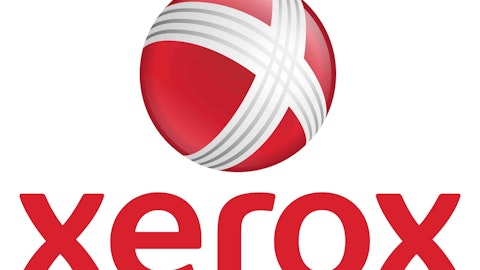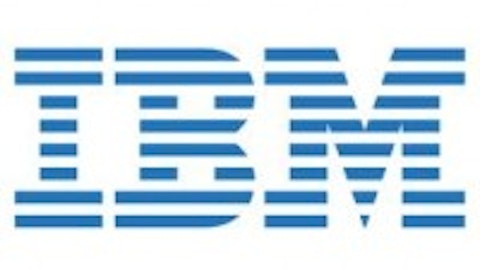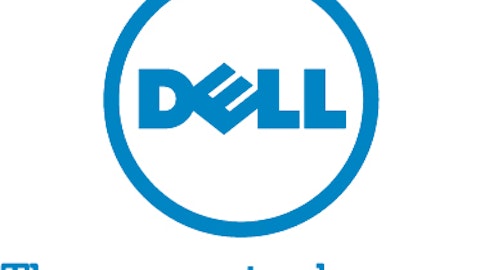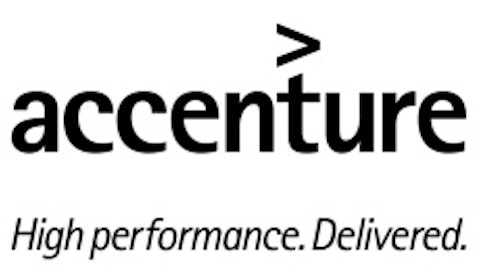For tech-industry insiders and casual trend-watchers alike, supercomputers have all but faded from memory. Whereas massive mainframes and room-sized computing aids were ubiquitous and essential during the middle of the 20th century, recent technological breakthroughs have relegated such devices to niche status. These days, supercomputers exist mainly to perform highly specialized functions or sift through inconceivable amounts of tedious data.

As a result, “supercomputer companies” are few and far between. Although it continues to sell its massive mainframes, Cray Inc. (NASDAQ:CRAY) has diversified its operational base and now produces servers, data storage systems and other cloud-focused solutions. Unfortunately, it is dwarfed by the big-name tech conglomerates with which it must compete. With fewer than 1,000 employees, Cray Inc. (NASDAQ:CRAY) looks like a runt next to industry powerhouses like Dell Inc. (NASDAQ:DELL) and International Business Machines Corp. (NYSE:IBM). Then again, its attractive stock price and surprisingly strong fundamentals may offer some value. Investors who have no aversion to out-of-favor companies may wish to take another look at Cray Inc. (NASDAQ:CRAY).
Cray vs. the Competition
It should be obvious that companies like Dell Inc. (NASDAQ:DELL) and IBM carry far more heft than niche players like Seattle-based Cray Inc. (NASDAQ:CRAY). However, investors should look beyond the multi-billion dollar market capitalizations of these industry veterans and take a closer look at balance-sheet fundamentals, valuation metrics and other sometimes-overlooked clues.
For starters, Cray Inc. (NASDAQ:CRAY) is surprisingly profitable. Its 2012 earnings of about $149 million came on total revenues of $388 million and produced a profit margin of nearly 40 percent. This is impressive relative to Dell Inc. (NASDAQ:DELL)’s $1.9 billion in earnings on $57 billion in revenues. That performance made for a margin of just over 3 percent. Although International Business Machines Corp. (NYSE:IBM) fared a bit better, its 2012 profit of $16.6 billion came on an eye-popping total take of $103 billion and made for a final margin of between 16 and 17 percent.
It should also be noted that International Business Machines Corp. (NYSE:IBM) and Dell Inc. (NASDAQ:DELL) carry decent amounts of debt on their books. Although few analysts have raised red flags over International Business Machines Corp. (NYSE:IBM)’s three-to-one debt-to-cash ratio, the company’s financial position should not be ignored. Meanwhile, Dell Inc. (NASDAQ:DELL) carries over $7 billion in long-term debt on its books and struggles with a shrinking cash flow. By contrast, Cray has no long-term debt and a decent reserve of cash. However, investors appear to remain wary of its unfavorable business model: Its price-to-book ratio of 2.2 is virtually identical to that of troubled Dell Inc. (NASDAQ:DELL) and less than 20 percent that of soaring International Business Machines Corp. (NYSE:IBM).
Recent Stock Performance
Over the past two years, Cray Inc. (NASDAQ:CRAY) has generally outperformed the broader market. After a prolonged period of stagnation during the post-crisis recession, the company’s stock broke out of its trading range in mid-2012 and has been on a nearly uninterrupted ascent ever since. From an April 2012 low of about $7 per share, Cray’s shares rose to a high near $23 per share about a year later and now sit close to $20 per share. Although the company’s price movements have correlated fairly strongly with those of the broader market since its recent high, it does appear to be maintaining its relative strength. This behavior could bode well for technical and short-term investors. Long-term investors should be encouraged that favored technology and new-economy stocks like Tesla Motors Inc (NASDAQ:TSLA) have exhibited similar price movements in recent months.
Differing Analyst Opinions
A convincing consensus has yet to emerge around Cray. On one side of the fence, enthusiastic analysts argue that Cray’s strong fundamentals and impressive profitability have positioned it for further growth. These observers also argue that the company is well-positioned to take advantage of the ever-growing need for data storage and high-speed servers.
On the other hand, many observers are convinced that the industry’s dynamics will favor larger, better-established firms over Cray. Although star analysts like Jim Cramer do not argue with the “expanding data storage” premise, they do take issue with Cray’s positioning. As these observers see it, the best that Cray can hope for is a favorable buyout offer from a larger competitor.
Strengths and Weaknesses
Cray’s most obvious strengths lie on its strong balance sheet and earnings report. In addition to its attractive headline numbers, its “background” metrics look good as well. For instance, its cash conversion cycle has been steadily shortening over the past year and now looks far more attractive than that of its peers. Since a quick cash conversion cycle facilitates capital allocation and makes it easier for firms to adjust to changing realities, this is an unfettered positive for Cray.
Some argue that Cray is simply too small to compete with its larger rivals. While this could turn out to be true, it is important to note that companies like International Business Machines Corp. (NYSE:IBM) seem very expensive at the moment. Even if it cannot hope to dominate such a powerful firm, Cray may yet offer more short-term value. Investors who believe that secular market trends and solid management will benefit Cray would do well to take a closer look and conduct further research.
Mike Thiessen has no position in any stocks mentioned. The Motley Fool owns shares of International Business Machines (NYSE:IBM).. Mike is a member of The Motley Fool Blog Network — entries represent the personal opinion of the blogger and are not formally edited.
The article Solid Value Play or Relic From an Earlier Time? originally appeared on Fool.com is written by Mike Thiessen.
Copyright © 1995 – 2013 The Motley Fool, LLC. All rights reserved. The Motley Fool has a disclosure policy.




